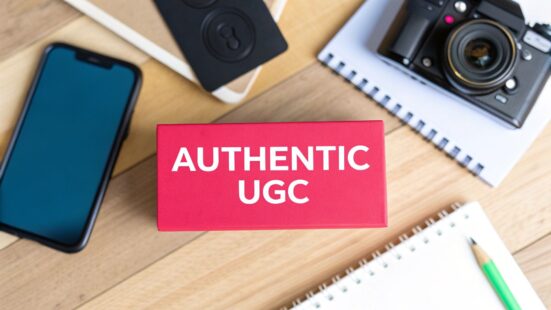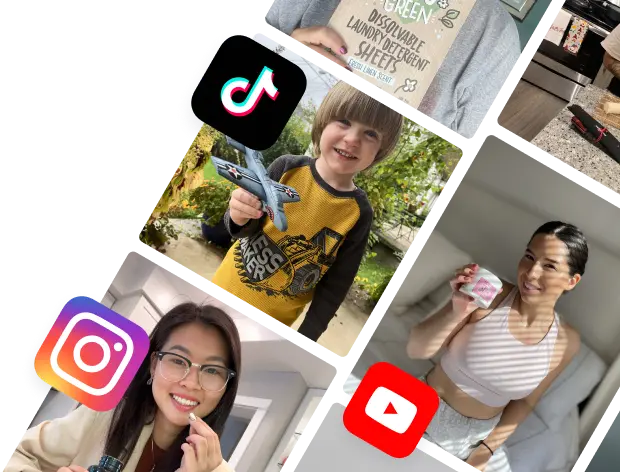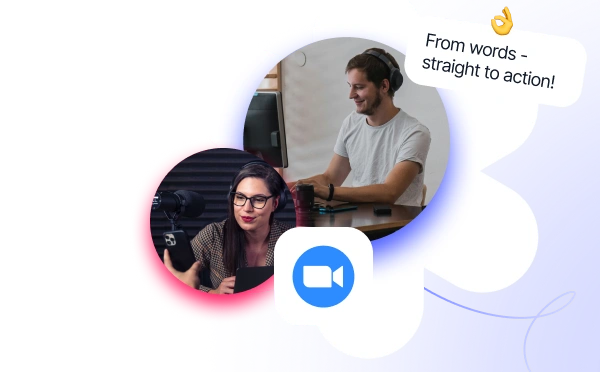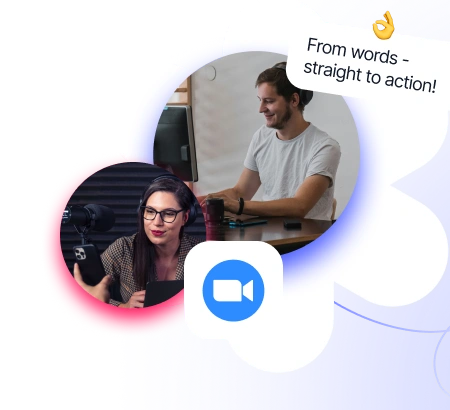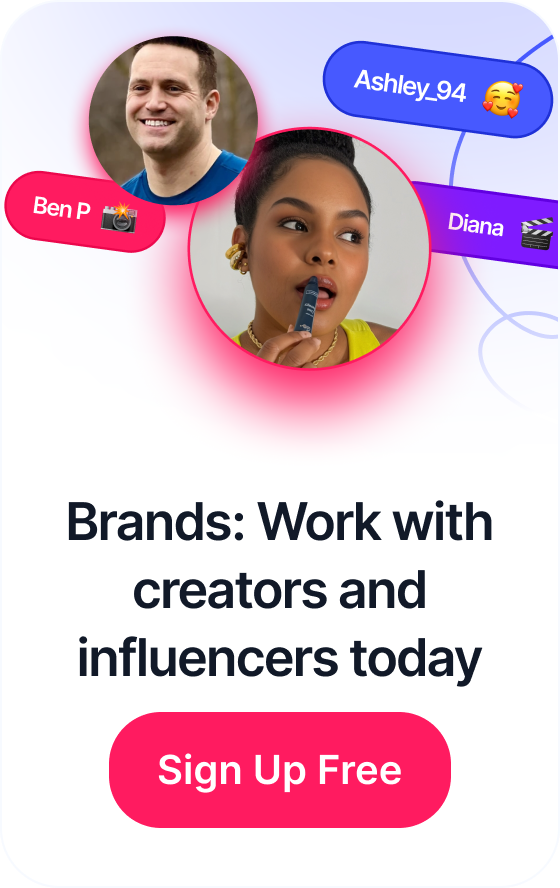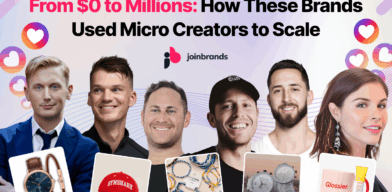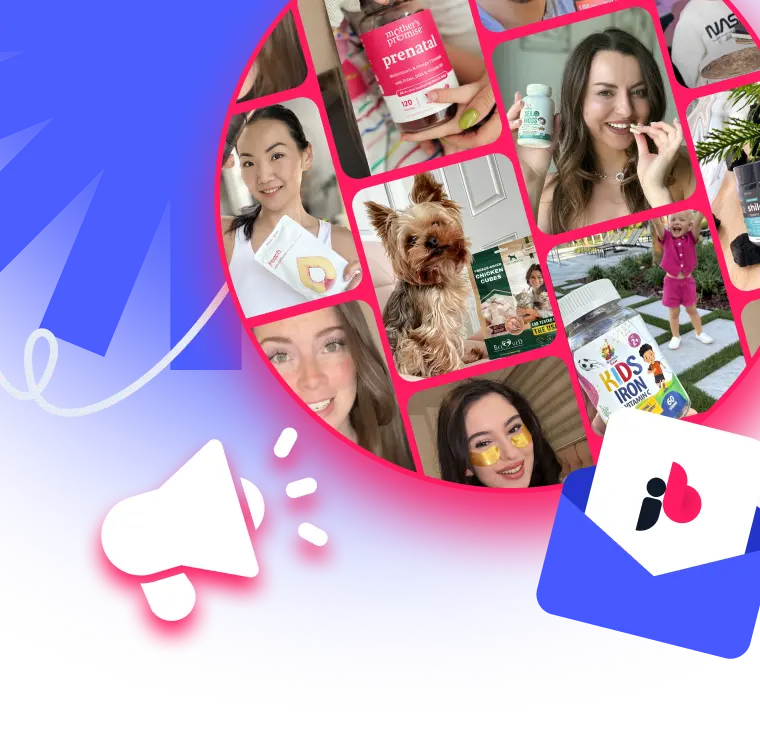 7 Influencer Marketing Examples to Boost Your 2025 Strategy
7 Influencer Marketing Examples to Boost Your 2025 Strategy
Making user-generated content (UGC) isn't just about collecting assets. It’s about sparking a movement. You're inspiring your audience to create real, authentic content that features your brand, and it all starts with a simple, clear call-to-action—think a hashtag challenge or a quick review request. The magic happens when you engage, celebrate, and repurpose what your customers share. That's how you build a community.
Table of Contents
Why UGC Is Your Most Authentic Marketing Channel
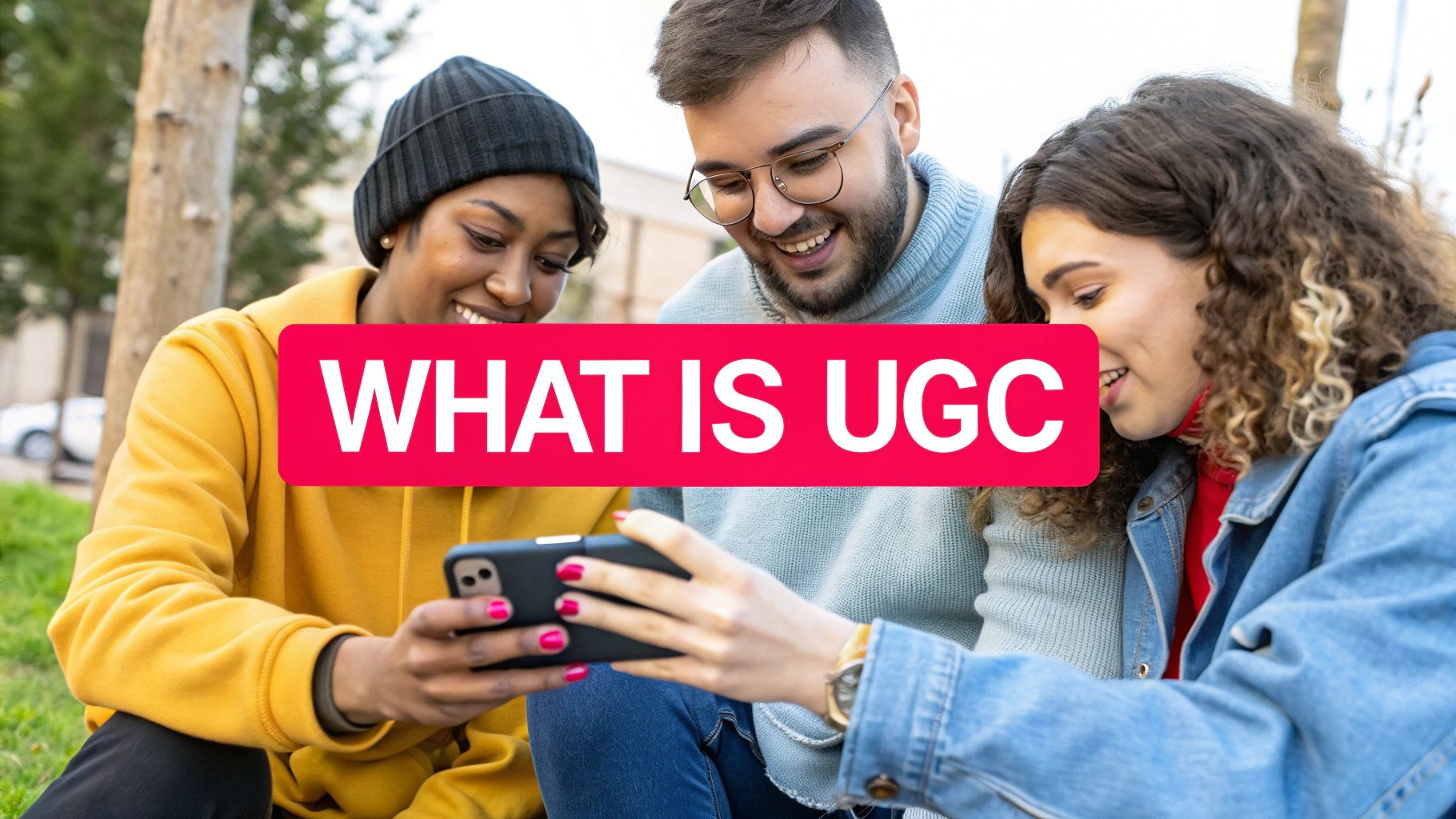
Let's face it, the marketing game has changed. Today's customers are savvy and more skeptical than ever of polished corporate ads. They're looking for content that feels real and relatable. This is where user-generated content isn't just an option; it's your most powerful tool. It’s the modern-day word-of-mouth, and it works.
The core of great UGC isn't about perfect lighting or professional editing; it's about genuine emotion and real experiences. It turns your customers into your most trusted storytellers, building a level of trust that paid advertising simply cannot buy.
This isn't just a hunch; the numbers back it up. The UGC market recently shot up to over $7.6 billion worldwide, which is a massive 69% increase from the year before. This explosion is happening because brands need more cost-effective marketing that actually connects, and customers are tired of the noise—they want content they can trust.
The Psychology of Trust in UGC
At its heart, UGC's power comes down to simple human psychology. We're wired to trust recommendations from people like us far more than we trust messages coming directly from a brand.
When a potential customer sees someone just like them unboxing a product or sharing a glowing review, it just hits different. It carries so much more weight than a slick ad, creating an immediate connection and breaking down the barriers that might stop someone from buying.
Here’s why it’s so effective:
- Social Proof: UGC delivers undeniable social proof. It's a clear signal to potential buyers that real people are already using and loving your products.
- Relatability: The content is often raw and unpolished, which makes it infinitely more relatable than a big-budget, studio-produced campaign.
- Community Building: When you encourage and share UGC, you're not just collecting photos. You're building a strong community around your brand and making your customers feel seen and valued.
Understanding the bigger picture of digital marketing for beginners helps put into context why UGC is quickly becoming the most authentic channel in a marketer's toolkit. It’s not just about getting free content; it’s about creating a self-sustaining cycle of authentic engagement that delivers real results.
From unboxing videos to heartfelt testimonials, there are countless powerful user-generated content examples that brands are using to build fierce loyalty and drive conversions. This guide will walk you through building a system that turns those genuine customer stories into your most valuable marketing asset.
Building Your Foundational UGC Strategy
A winning UGC campaign is never a happy accident—it’s the result of a deliberate, well-thought-out plan. Just asking people for content without any real direction is like setting sail without a map. Before you even think about launching a hashtag or reaching out to creators, you need to build a strong foundation. This means getting specific and moving beyond vague ideas like "more engagement."
Your first move? Pinpoint your primary objective. What does success actually look like for this campaign? The goal you land on will shape every single decision you make from here on out, from the kind of content you ask for to the platforms you pour your energy into.
This visual breaks down the simple, three-part flow I use when planning any powerful UGC strategy.
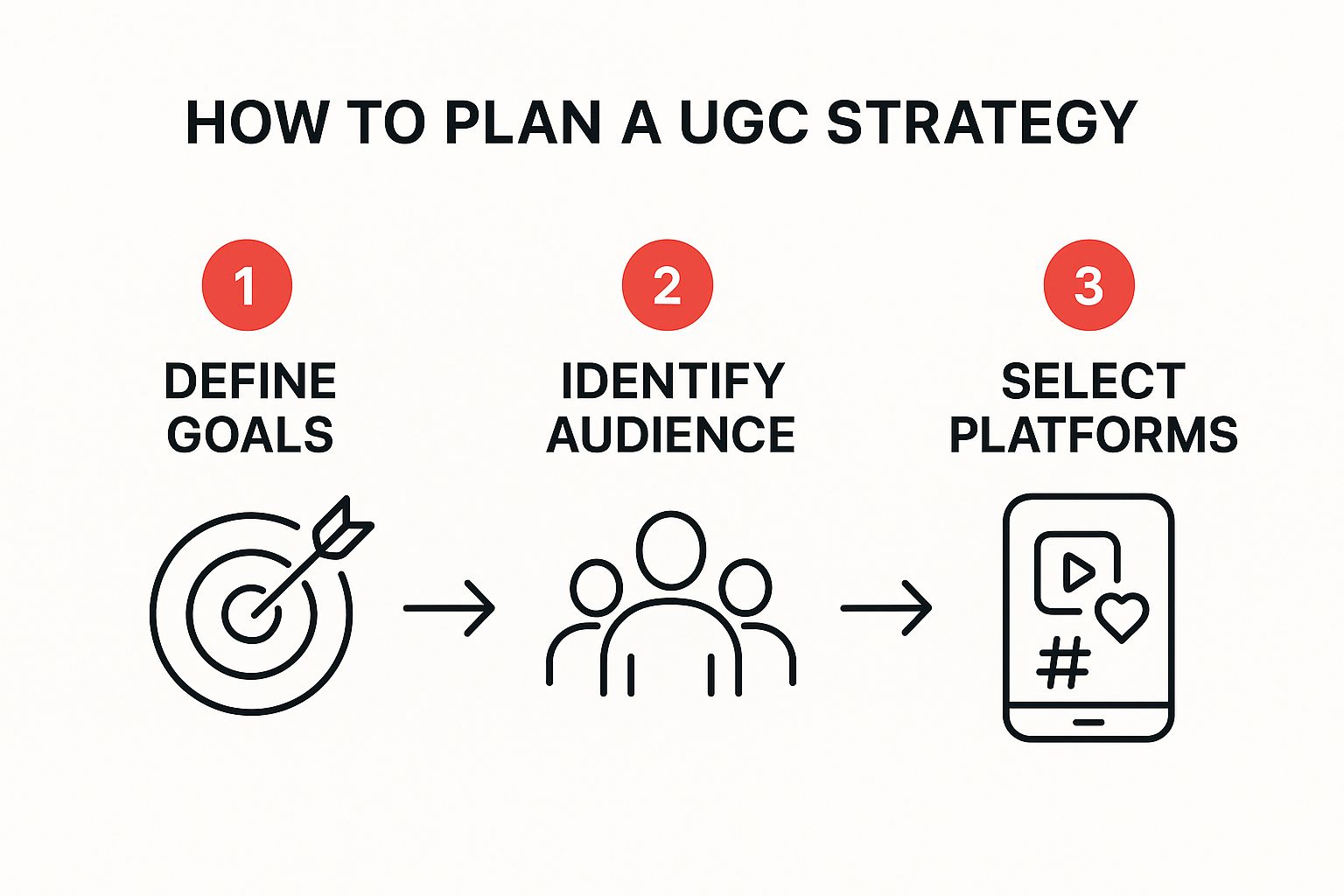
As you can see, defining your goals, understanding your audience, and picking the right platforms aren't separate tasks. They’re sequential steps that build on each other to create a cohesive, powerful plan.
Define Your Campaign Goals
If you don't have specific, measurable goals, you have absolutely no way of knowing if your efforts are paying off. These objectives become your North Star, guiding your entire approach to generating and using content. Take a moment to think about what your brand truly needs right now.
Some of the most common campaign goals I see are:
- Boosting Brand Awareness: The name of the game here is reach and visibility. You want to get your brand in front of as many new, relevant people as possible. Think viral challenges or highly shareable content on platforms like TikTok.
- Driving Sales for a New Product: This is all about conversions. You need content that shows the product in action, highlights its real-world benefits, and includes a clear call-to-action that makes people want to buy. Unboxing videos and practical "how-to" tutorials are pure gold for this.
- Building a Content Library: Sometimes, the main goal is simply to gather a diverse collection of authentic visuals. This gives you a steady stream of high-quality, relatable assets you can repurpose across your website, social media, and ads for months to come.
A well-defined goal is the difference between just collecting content and running a campaign that delivers real, measurable business results. Get granular—instead of just "increase engagement," aim for something like "achieve a 15% increase in shares on Instagram Reels within 60 days."
Getting your strategy right is more important than ever. Projections show the global UGC market could explode from USD 6.7 billion to over USD 132.73 billion by 2034. Right now, North America is driving over 36.6% of that revenue, largely thanks to massive social media adoption. A solid plan is your ticket to claiming a piece of that growth.
Understand Your Ideal Creator
Once your goal is locked in, you need to know exactly who you're talking to. Creating a detailed user persona goes way beyond listing basic demographics like age and location. You have to dig deeper to understand the core motivations of your audience. What actually inspires them to create and share content in the first place?
Ask yourself these kinds of questions:
- What are their real passions and hobbies?
- What kind of content are they already making and loving?
- What's their motivation? Is it pure self-expression, connecting with a community, or the chance to get featured by a brand they love?
For example, a skincare brand targeting Gen Z will probably find their audience is motivated by authenticity and a desire to share unfiltered "get ready with me" routines. A B2B software company, on the other hand, will likely find its audience wants to share professional expertise and build their personal brand through insightful video testimonials.
When you understand these motivations, you can craft a call-to-action that truly resonates.
Align Content Formats With Your Goals
The final piece of the puzzle is connecting your goals and audience insights to specific content formats. The type of UGC you ask for should directly support your primary objective.
To make this easier, think about how different goals pair with certain platforms and content types.
UGC Campaign Goal And Platform Alignment
Matching your primary marketing goal with the most effective UGC format and social media platform.
| Campaign Goal | Best UGC Format | Primary Platform |
|---|---|---|
| Increase Brand Awareness | Viral challenges, funny skits, hashtag trends | TikTok, Instagram Reels |
| Drive Product Sales | Unboxing videos, tutorials, authentic reviews | YouTube, Instagram Stories |
| Build Community | Q&A sessions, photo submissions, testimonials | Instagram, Facebook Groups |
| Gather Social Proof | Text reviews, star ratings, video testimonials | Website, Google My Business |
| Create a Content Library | High-quality photos, aesthetic videos | Instagram, Pinterest |
A mismatch here can completely derail a campaign. For instance, asking for polished photo reviews when your goal is to drive sales through authentic TikTok videos just won't work. When you're armed with a clear plan, you can explore various user-generated content strategies and find the perfect fit for your brand.
Aligning your format, platform, and goal is the final, critical piece of your strategic foundation. It ensures every single piece of content you generate serves a clear and powerful purpose.
Finding and Partnering With Authentic Creators

Let's get one thing straight. The real magic of UGC doesn't come from a huge budget or a perfectly polished creative brief. It comes from the genuine passion of the people making the content.
Your mission isn't to hunt down creators with the biggest follower counts. It’s to find your actual customers and micro-creators whose excitement for your brand is real and totally contagious. You need to become a bit of a digital detective, seeking out the people who are already talking about you.
Often, the best UGC comes from people who weren't paid a dime to create it—they just flat-out love what you do.
Where to Discover Your Best Creators
Finding these authentic voices means looking in the right places. The good news? They're usually hiding in plain sight. Before you even think about fancy software, let's start with some smart, manual searching.
Your first stop should always be your own digital backyard. Who’s tagging your brand in photos and videos? These are your people—they’re already engaged enough to bring you into their world. That’s your low-hanging fruit.
Here are a few field-tested ways to find them:
- Hashtag Deep Dives: Think beyond your branded hashtags. Dig into broader, niche-specific tags related to your industry. A coffee brand, for example, should be living in hashtags like #homebarista or #morningcoffee to find passionate home brewers.
- Competitor Analysis: Who is tagging your competitors? This is a goldmine. It shows you who is active in your space and might be open to discovering a better alternative (that’s you).
- Location Tag Exploration: If you have physical stores or your product is tied to certain places, check the location tags on Instagram. It’s a killer way to find local advocates creating content right on the ground.
- Review and Comment Sections: Don't sleep on your own comment sections and product reviews. Someone who takes the time to leave a detailed, glowing review is a perfect candidate for a partnership.
These methods are all about spotting genuine enthusiasm. When you know how to make UGC, you understand that a creator with 1,000 engaged followers who truly loves your product is infinitely more valuable than a mega-influencer with 100,000 followers who couldn’t care less about your mission.
Crafting Outreach That Feels Human
So you've found a potential creator. Awesome. Now, how you reach out is absolutely critical. A generic, copy-pasted DM is the fastest ticket to the ignored folder. Your outreach has to feel personal, respectful, and genuine—just like the content you're after.
Before you ever slide into their DMs, engage with their stuff! Leave a real comment on a few of their posts. When you do reach out, be specific.
Bad Outreach: "Hey, we love your content and want to collab!"
Good Outreach: "Hi [Creator Name], I'm [Your Name] from [Brand]. I absolutely loved your recent video on [specific topic]—the way you explained [detail] was brilliant. We think you'd be a perfect fit to try our new [product]."
See the difference? The second one shows you actually paid attention. It’s a conversation starter, not a cold pitch. This approach immediately builds goodwill and shows you respect their work.
Setting Expectations Without Stifling Creativity
Once you’ve made a connection, it's time to get on the same page. This is where a clear, concise creative brief comes in handy. But the goal here isn't to dictate every shot and script every line. It's to provide guardrails that keep things brand-aligned while giving the creator the freedom to be their awesome, creative self.
Your brief should outline the must-haves but leave plenty of room for their unique style to shine.
Key Elements of a Flexible Creative Brief:
- Campaign Goal: Keep it simple. "We're launching our new moisturizer and want to show how it fits into a real morning routine."
- Key Talking Points: Give them 2-3 essential messages to hit. Don't write a script; just provide the core ideas.
- The "Do's and Don'ts": This is for critical brand safety. For example, "Do show the product's texture," but "Don't make any medical claims."
- Call to Action (CTA): Let them know what you want the viewer to do next. "Ask your audience to share their own morning routine in the comments."
Finally, talk about compensation openly and fairly. And remember, payment isn't always cash. For many true brand fans, getting a free product is more than enough. For more established UGC creators, be ready to pay a fair rate that reflects their effort and the usage rights you need.
Building a strong, respectful relationship from the jump is how you turn a one-off collaboration into a long-term partnership that generates a steady stream of incredible, authentic content.
Kicking Off and Running a Seamless UGC Campaign
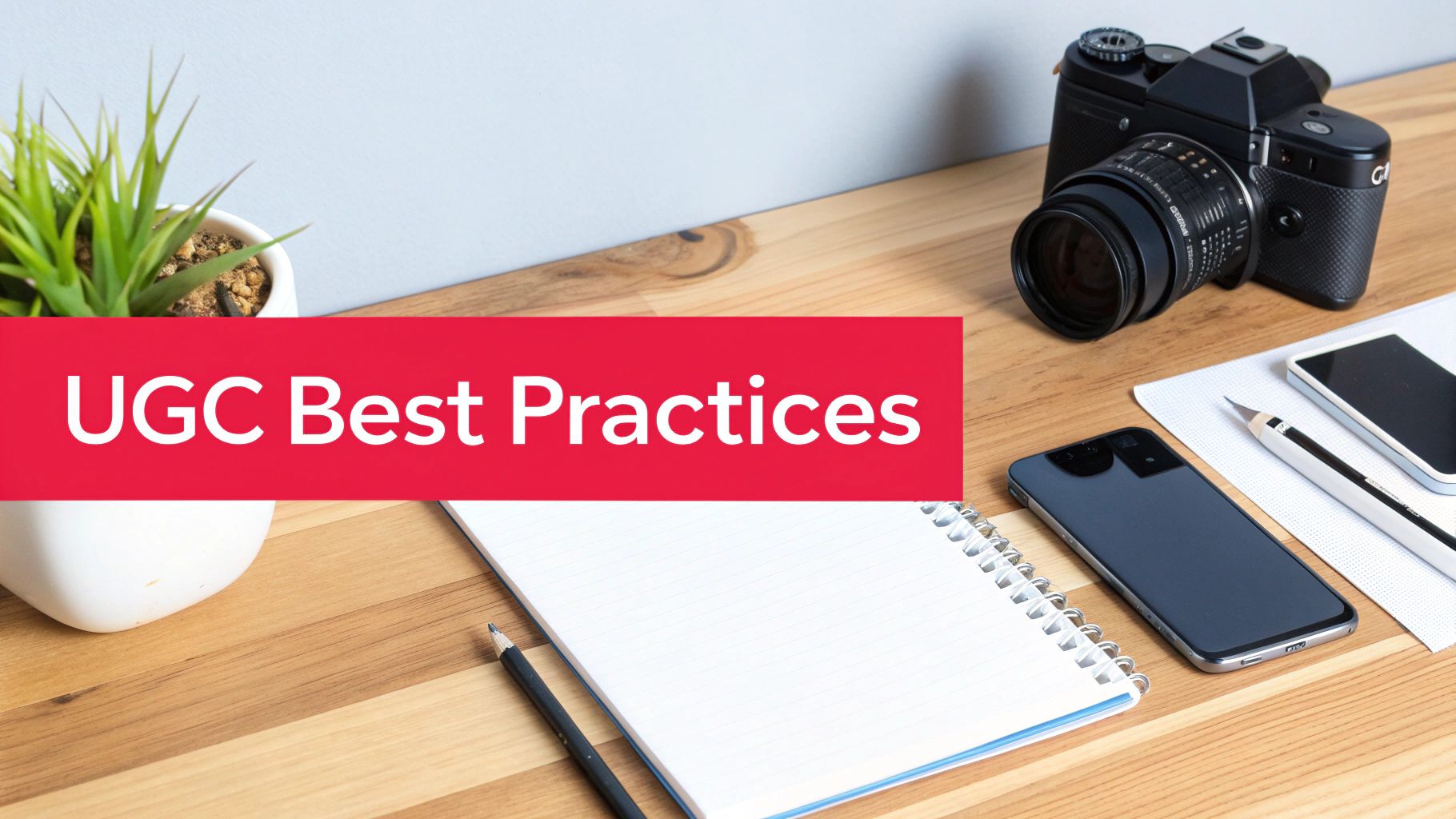
You’ve got your strategy locked in and the right creators are ready to go. Now for the fun part: bringing your UGC campaign to life. This is where the real work begins, and the operational details are what separate a chaotic, one-off project from a smooth, repeatable success story.
It all starts with your call-to-action (CTA). You need something that genuinely inspires people to jump in. It has to be simple, clear, and compelling. Whether it’s a branded hashtag challenge on TikTok or a straightforward ask for video reviews, the easier it is for people to get what you want, the better your results will be.
For instance, a generic "Share your photos with us!" is just noise. It won't get you anywhere. A much stronger CTA is something like, "Show us your ultimate morning coffee setup using #MyBrewRoutine for a chance to be featured on our page!" This gives them a specific theme, a clear hashtag, and a real incentive.
Nailing Down the Campaign Logistics
Juggling a UGC campaign, especially one with a bunch of different creators, can feel like spinning plates. Success comes down to being ridiculously organized and communicative. Your main job is to make the entire process frictionless for your creators so they can focus on what they do best—making awesome content.
Here are a few key areas you need to dial in:
- Shipping Products: Get your products out the door, fast. Use a reliable shipping method with tracking and give the creator a heads-up the second it’s on the way. A delay here can throw your whole content calendar off schedule.
- Centralized Communication: Ditch the scattered DMs and email threads. Set up a dedicated Slack channel or even a simple shared Google Doc to keep all communications, briefs, and deadlines in one spot.
- Clear Timelines: Give them a simple schedule with key dates. Make sure to include the deadline for content submission and the approximate date you plan to post their work. This shows you respect their time and helps them plan their own calendar.
Once your campaign is live, you absolutely have to track its performance. To really get into the weeds, learning more about how to measure advertising effectiveness will help you fine-tune your strategy. This isn't just about counting likes; it's about understanding what content is actually moving the needle.
Securing Content Rights The Right Way
Pay close attention, because this is probably the most critical part of managing a UGC campaign—and it’s where a lot of brands mess up. Just because someone tags your brand in a post does not give you the legal right to use their content in your marketing. Using content without explicit permission can land you in serious legal trouble and damage your reputation.
You have to secure the rights to every single piece of content you want to repurpose. The key is to be completely transparent and upfront from the get-go. A simple, easy-to-understand agreement is your best friend here.
Never assume you have permission. Always get it in writing. A clear, straightforward agreement protects both your brand and the creator, building a foundation of trust for future collaborations.
Here’s a practical way to handle this:
- Draft a Simple Agreement: Your terms don't need to be 20 pages of dense legalese. A one-page document is usually all you need.
- Specify Usage: Clearly state how and where you plan to use the content. Be specific. Will it be on organic social, paid ads, your website, or in email marketing?
- Define the Duration: State how long you have the rights to the content. Common options are a set period (like one year) or "in perpetuity," which means forever.
- Confirm Compensation: Reiterate the payment you agreed on, whether it's cash, free product, or store credit. This just puts the value exchange for the content rights in writing.
By creating a dead-simple process for your logistics and legalities, you eliminate friction and build much stronger relationships with your creators. This kind of operational excellence is the secret sauce to scaling your efforts and turning a one-off campaign into a steady stream of authentic content that fuels your brand's growth.
How to Amplify and Repurpose Your Best UGC
Collecting fantastic user-generated content is an exciting milestone, but it's really just the starting point. The real magic happens when you strategically put that content to work across all your marketing channels. This is how you transform authentic customer stories into powerful assets that drive serious business growth.
Letting great UGC sit in a folder is a huge missed opportunity. The goal is to maximize the reach and impact of every single high-performing piece of content. It’s about taking one authentic video and turning it into a dozen different marketing assets that work for you around the clock.
Turning UGC Into High-Converting Social Proof
One of the most powerful moves you can make is integrating UGC directly into your sales funnel. Think of it as compelling social proof. When potential customers are on the fence, seeing real people enjoying your product can be the final nudge they need to make a purchase.
Your website is prime real estate for this.
- Product Pages: Embed customer photos and short video clips directly where people shop. Seeing a piece of clothing on a real person, not just a model, gives a much more relatable and trustworthy visual.
- Homepage Hero Section: Why not feature your best video testimonials right on your homepage? This immediately builds trust with new visitors and shows that your brand is loved by a real community.
- Checkout Process: A subtle quote from a positive review near the "buy now" button can help slash cart abandonment rates by reassuring customers they're making a great decision.
This isn't just a fleeting trend; it’s a core component of modern marketing. In fact, a staggering 86% of companies now incorporate UGC into their strategies, according to amraandelma.com. They know authentic content from real users builds far more trust than traditional brand messaging ever could.
Repurpose a Single Piece of Content Everywhere
The beauty of a truly great piece of UGC is its versatility. A single unboxing video or a glowing review can be sliced, diced, and reshaped into a multitude of formats, extending its value far beyond the original post. This is how you make your content work smarter, not harder.
Your best-performing UGC is a goldmine of marketing material. Your job is to find creative ways to reshape it for different platforms and audiences, ensuring you get the maximum return on every piece of content.
Let’s take one great video testimonial as an example. Here’s what you could do with it:
- Pull Quote Graphics: Extract the most powerful sentence and turn it into a sharp, visually appealing quote graphic for Instagram and Facebook.
- Email Marketing: Embed the full video in your next newsletter. This adds a powerful layer of social proof right in your subscribers' inboxes.
- Audio Snippets: Strip the audio from the video and use it as a short, impactful clip in a podcast ad or a social media audio post.
- Website Banners: Create animated GIFs from the video to use as eye-catching banners on your site, drawing attention to key products.
This multi-channel approach guarantees your best content gets seen by the widest possible audience, in the format they prefer. If you're looking for more ways to get started, our guide to creating compelling user-generated videos offers a ton of practical tips.
Powering Your Paid Ads With Authentic UGC
Perhaps the most financially impactful use of UGC is in your paid advertising. Time and again, ads featuring authentic user content outperform polished, studio-shot creative. Why? Because they look and feel like native content, stopping the scroll and grabbing attention.
When someone sees an ad that looks like a post from a friend rather than a corporation, they're far more likely to engage. This directly leads to higher click-through rates and, crucially, a lower customer acquisition cost (CAC).
By testing different user-generated videos and images in your ad campaigns, you can use real data to see what resonates with your audience. Then, you just double down on what works. This is how you turn authentic customer love into a predictable and scalable growth engine.
Common Questions About Making UGC Work
Diving into user-generated content can feel like learning a new language. You see it working wonders for other brands, but when it comes to your own strategy, you're bound to have questions. Let's clear up some of the most common hurdles brands face when getting a UGC program off the ground.
Think of this as your practical field guide for navigating the day-to-day realities of making UGC work for you.
What Is the Difference Between UGC and Influencer Marketing?
It's easy to see why these two get mixed up, but their core value is fundamentally different. While they can absolutely overlap, the key distinctions boil down to authenticity, scale, and cost.
Influencer marketing usually involves a paid partnership with an established creator who has a large, dedicated following. The content is often polished and aspirational, produced as part of a formal, planned campaign.
UGC, on the other hand, comes from your everyday customers or smaller micro-creators. It might be created organically just because they love your product, or perhaps in exchange for a freebie. Its power lies in its raw, relatable feel—it builds trust because it feels like a genuine recommendation from a friend, not an ad.
The smartest brands use a hybrid strategy. They might tap a macro-influencer to announce a new product launch and then follow it up with a wave of authentic UGC to show how real people are actually using it.
How Do I Get Legal Rights to Use Customer Content?
This is the big one. It's non-negotiable and you absolutely have to get it right. You must have explicit, written permission before you repurpose any content that you didn't create yourself.
Let me be crystal clear: just because someone tags your brand in a post does not give you the right to use it on your website or in your ads.
So, how do you handle this properly? Always get clear, documented consent before you hit publish.
- For Contests and Campaigns: Your best bet is to include usage rights directly in the official terms and conditions. Make it a requirement for entry that participants agree to these terms.
- For Organic Content: If you stumble upon a fantastic post organically, the simplest way is to slide into their DMs. Send a direct message asking for permission and be specific about how and where you want to use it (e.g., "in perpetuity on all our social media channels and digital ads").
- Using a Platform: This is often the easiest route. Many dedicated UGC platforms like JoinBrands have rights management features built right into their workflow, taking the headache out of the process.
The golden rule of UGC is simple: when in doubt, get it in writing. This protects your brand legally and, just as importantly, shows respect for the creator's work. It's how you build a foundation of trust.
What Should I Do About Negative UGC?
First, take a deep breath. A negative comment isn't a crisis—it's a massive opportunity to show everyone what your brand is made of.
Unless a post violates community guidelines (like hate speech or spam), your first instinct should never be to delete it. Hitting delete on a legitimate complaint basically tells the world you have something to hide. Don't do it.
Instead, respond publicly, professionally, and quickly. Acknowledge their issue, offer a sincere apology, and then immediately offer to take the conversation private to a DM or email to get the specifics sorted out.
This kind of transparency is incredibly powerful. Other potential customers who see you handling criticism with grace will trust you more, not less. Honestly, a well-handled complaint can build more brand loyalty than a feed filled with nothing but five-star reviews.
How Much Should I Pay a UGC Creator?
Compensation for UGC isn't one-size-fits-all, and it's definitely not always about cash. The right approach depends entirely on who you're working with and what you're asking for.
For many of your genuine customers who are just thrilled to be featured, getting a free product is more than enough compensation for a quick photo or video. Their motivation is often the recognition and feeling like a part of your brand's community.
However, once you start partnering with experienced UGC creators who do this for a living, you should expect to pay. Rates can vary wildly, from $50 to over $500 per video, depending on a few key factors:
- Creator's Experience: Someone with a killer portfolio and a track record of results is going to command a higher rate.
- Content Complexity: A multi-scene, edited video with graphics is going to cost more than a simple 15-second, off-the-cuff clip.
- Usage Rights: This is a big one. Rights to use a video for organic social media might run you $150, but securing the rights to use that same video in paid ads could easily double or triple the price.
My advice? Start with a clear budget, be transparent about what you can offer, and always be prepared to negotiate. It's all about finding a fair price based on the scope of work and the value that content will bring to your brand.
Ready to stop searching for creators and start building powerful UGC campaigns? JoinBrands connects you with over 250,000 creators to produce authentic content that drives sales and boosts your social presence. Find your perfect match and launch your next campaign in minutes at https://joinbrands.com.
